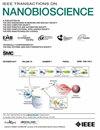Review of Physical Layer Security in Molecular Internet of Nano-Things
IF 3.7
4区 生物学
Q1 BIOCHEMICAL RESEARCH METHODS
引用次数: 1
Abstract
Molecular networking has been identified as a key enabling technology for Internet-of-Nano-Things (IoNT): microscopic devices that can monitor, process information, and take action in a wide range of medical applications. As the research matures into prototypes, the cybersecurity challenges of molecular networking are now being researched on at both the cryptographic and physical layer level. Due to the limited computation capabilities of IoNT devices, physical layer security (PLS) is of particular interest. As PLS leverages on channel physics and physical signal attributes, the fact that molecular signals differ significantly from radio frequency signals and propagation means new signal processing methods and hardware is needed. Here, we review new vectors of attack and new methods of PLS, focusing on 3 areas: (1) information theoretical secrecy bounds for molecular communications, (2) key-less steering and decentralized key-based PLS methods, and (3) new methods of achieving encoding and encryption through bio-molecular compounds. The review will also include prototype demonstrations from our own lab that will inform future research and related standardization efforts.纳米物联网中的物理层安全回顾。
分子网络已被确定为纳米物联网(IoNT)的一项关键使能技术:可在广泛的医疗应用中监测、处理信息并采取行动的微型设备。随着原型研究的成熟,目前正在密码层和物理层研究分子网络的网络安全挑战。由于物联网设备的计算能力有限,物理层安全(PLS)尤其引人关注。由于物理层安全利用信道物理和物理信号属性,分子信号与射频信号和传播有很大不同,这意味着需要新的信号处理方法和硬件。在此,我们将回顾新的攻击载体和新的 PLS 方法,重点关注 3 个领域:(1) 分子通信的信息理论保密边界;(2) 无密钥转向和基于分散密钥的 PLS 方法;(3) 通过生物分子化合物实现编码和加密的新方法。综述还将包括我们自己实验室的原型演示,这些演示将为未来的研究和相关标准化工作提供参考。
本文章由计算机程序翻译,如有差异,请以英文原文为准。
求助全文
约1分钟内获得全文
求助全文
来源期刊

IEEE Transactions on NanoBioscience
工程技术-纳米科技
CiteScore
7.00
自引率
5.10%
发文量
197
审稿时长
>12 weeks
期刊介绍:
The IEEE Transactions on NanoBioscience reports on original, innovative and interdisciplinary work on all aspects of molecular systems, cellular systems, and tissues (including molecular electronics). Topics covered in the journal focus on a broad spectrum of aspects, both on foundations and on applications. Specifically, methods and techniques, experimental aspects, design and implementation, instrumentation and laboratory equipment, clinical aspects, hardware and software data acquisition and analysis and computer based modelling are covered (based on traditional or high performance computing - parallel computers or computer networks).
 求助内容:
求助内容: 应助结果提醒方式:
应助结果提醒方式:


